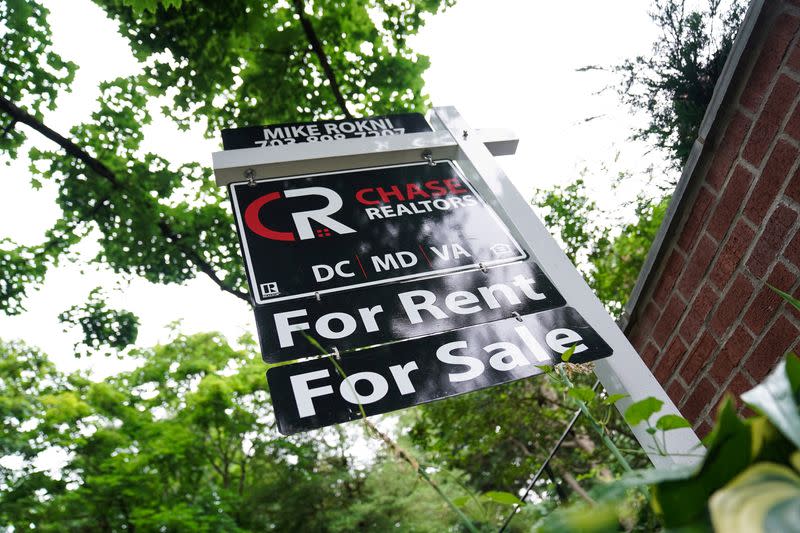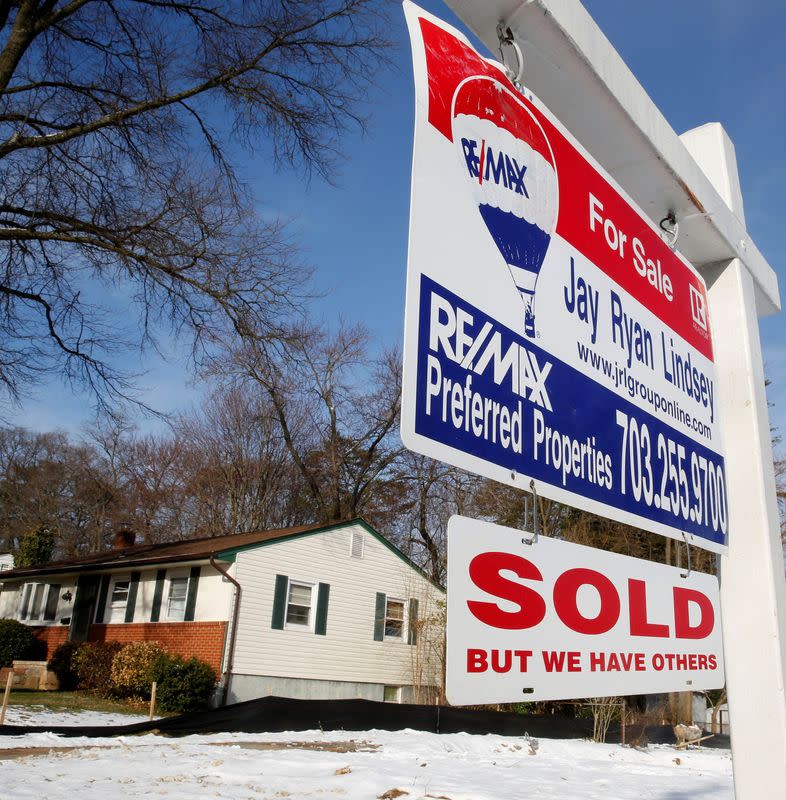Big banks' Q2 earnings to shed light on gloomy U.S. mortgage outlook
By Elizabeth Dilts Marshall
NEW YORK (Reuters) - U.S. analysts and economists will be watching to see how banks' mortgage businesses are faring during their second-quarter earnings this month, as U.S. Federal Reserve rate hikes continue to crimp mortgage originations and refinancings.
After hiring tens of thousands of staff between 2018 and 2020 to handle surging mortgage originations and refinancings driven by low interest rates, the mortgage sector is downsizing. U.S. banks including JPMorgan Chase & Co and Wells Fargo & Co have started cutting staff, with more industry layoffs expected in coming months, said analysts and economists.
"Over the next month or two we'll see the bulk of layoffs," said Doug Duncan, chief economist at Fannie Mae, which, along with Freddie Mac, backs many U.S. mortgages. "There is usually about a six-month lag between a turn in the market and layoffs."
Home loan interest rates surged to a 14-year high in June after the Fed hiked rates by 0.75% percentage point. The average rate on a 30-year fixed-rate mortgage, the most common U.S. home loan, was 5.3% as of July 7, up from 2.9% a year ago, according to Freddie Mac.
Fannie Mae economists predict that total home sales will fall by 13.5% this year and that mortgage originations will decline by nearly 42% to $2.6 trillion.
Big U.S. banks will start to report earnings for April through June, historically home-buying season in the United States, on July 14.
BANK DOWNSIZING
The industry pain began late last year among nonbank lenders focused on refinancings. Better.com, for example, laid off 900 employees in December, with several nonbank rivals following suit this year.
Gerard Cassidy, head of U.S. bank equity strategy at RBC Capital Markets, said the bigger banks were starting to downsize too. "We expect it to continue throughout the year as the refinancing business remains under considerable pressure."
Wells Fargo, the biggest bank in the U.S. mortgage business, cut staff in April and June, said one person with knowledge of the matter. JPMorgan, among the 10 biggest U.S. bank mortgage lenders, also cut staff in June, said a different person with knowledge of its plans. The sources declined to provide figures.
The mortgage business accounted for 6% and 2% of total revenue at Wells Fargo and JPMorgan, respectively, last year, according to data compiled by RBC's Cassidy.
In the first quarter, Wells Fargo reported a 33% year-on-year decline in mortgage revenue, while JPMorgan said home lending net revenue was down 20%. That decline is expected to continue in the second quarter.
In June, Wells Fargo executives said at two banking conferences that they plan to scale back the mortgage business, and that investors should expect second-quarter mortgage revenue to be off 50% from first-quarter levels.
If rates remain elevated and housing sales slow further, some bank downsizing could result in one-off charges later this year, Cassidy wrote in a note published Tuesday.
Some small lenders have fared much worse. Texas-based mortgage lender First Guaranty Mortgage Corp filed for bankruptcy last month.
BRIGHT SPOTS
It is not bad for everyone, however.
Bank of America Corp, another large mortgage lender, has not cut staff and has no plans to do so this year, said a source familiar with the matter. In fact, the bank expects "good, balanced" mortgage loan growth for 2022, said Deutsche Bank analyst Matt O'Connor.
Bank of America was the only big bank to report that company-wide mortgage revenue rose, by nearly 8%, in the first quarter this year compared with 2021. Executives attributed that to loan growth and fewer customers pre-paying their mortgages, which many had been doing during the pandemic.
The banks declined to comment on Thursday because they are in the pre-earnings quiet period.
Cassidy said he expects the decline in originations and refinancings to be partly offset by Home Equity Lines of Credit, as homeowners look to tap the equity in their houses.
Banks may also benefit from an increased demand for adjustable rate mortgages, which offer lower interest rates for shorter periods, according to Fannie Mae's Duncan.
Nonetheless, such bright spots will not be enough to insulate lenders from a significant economic downturn, said Duncan. The bright spots will also be too little to prevent further rate hikes if inflation hits 10%, he said.
"You'd expect an even greater slowdown," he added.
(Reporting by Elizabeth Dilts Marshall in New York; Editing by Michelle Price and Matthew Lewis)





